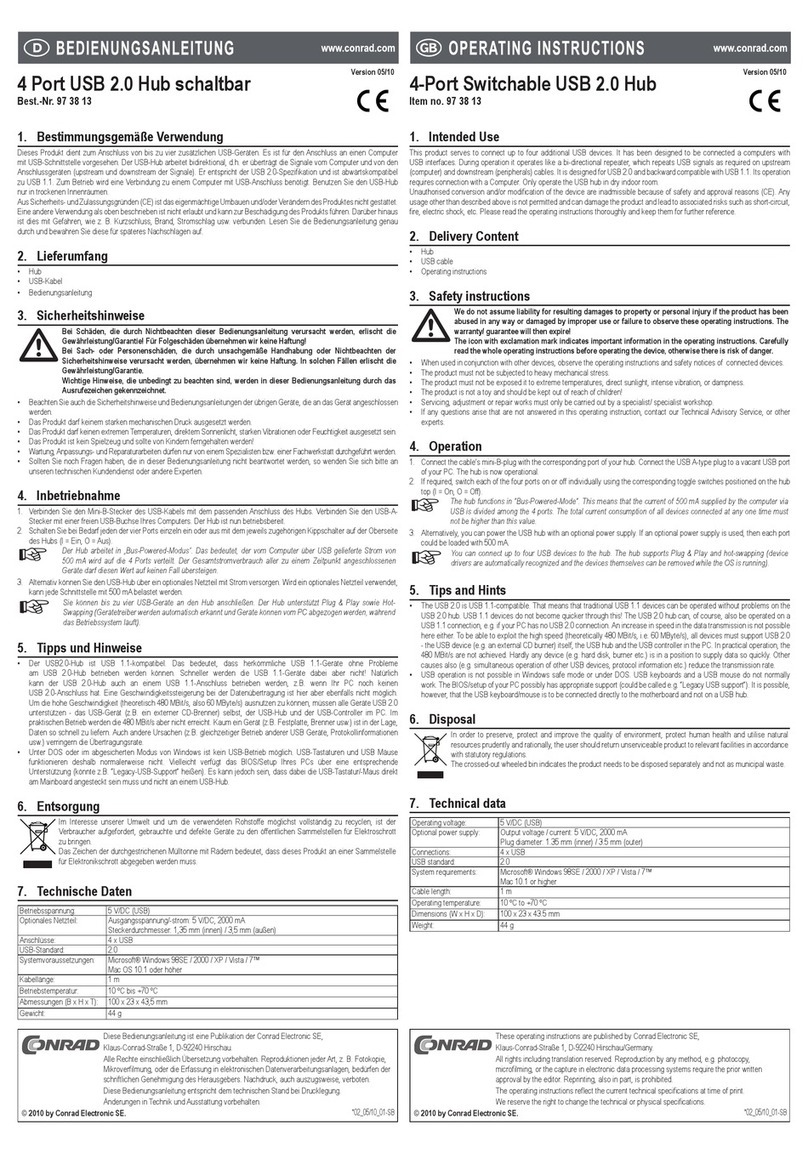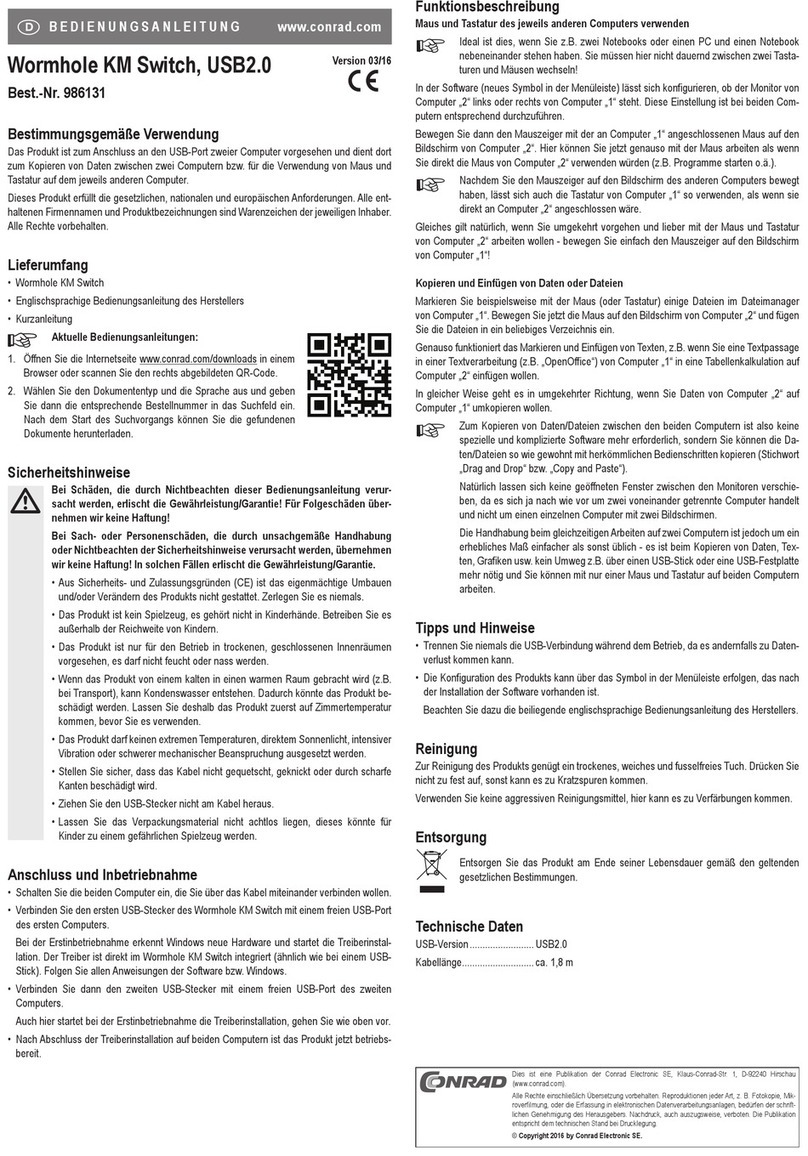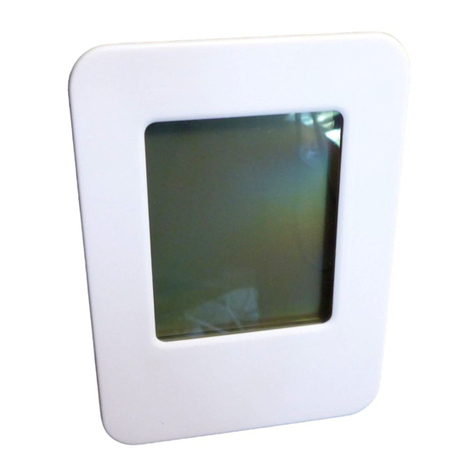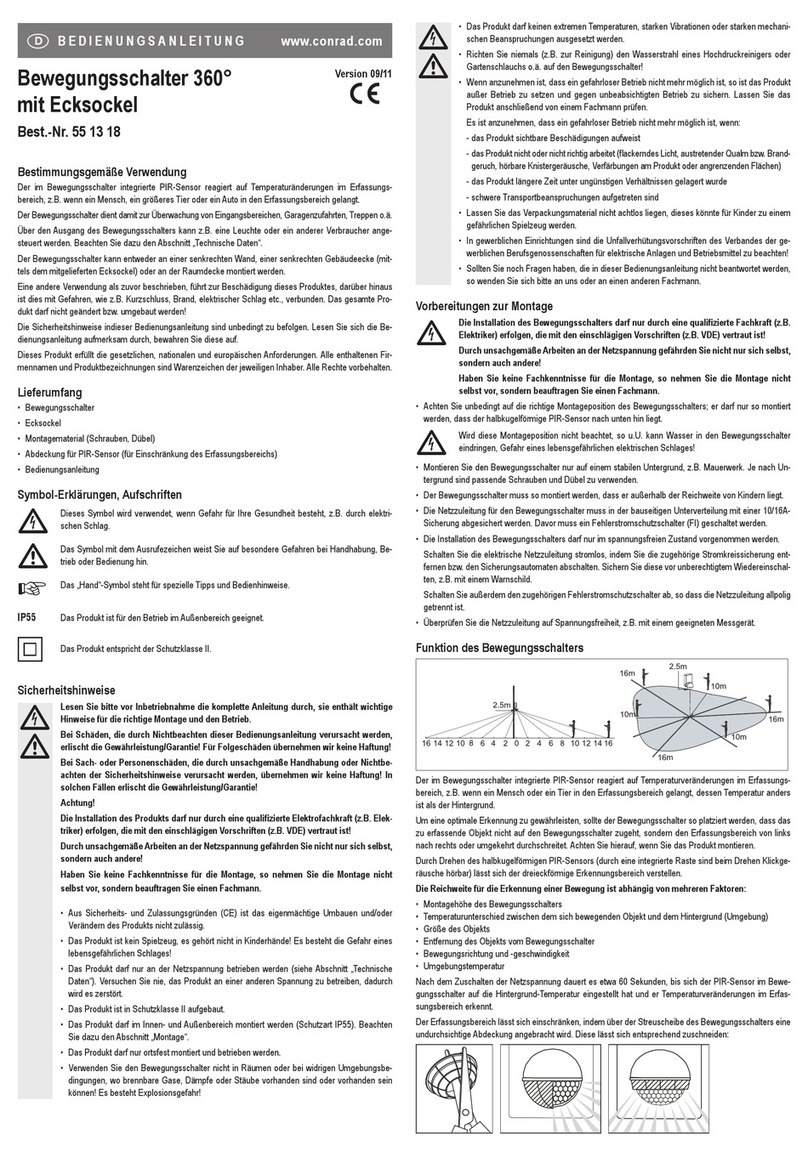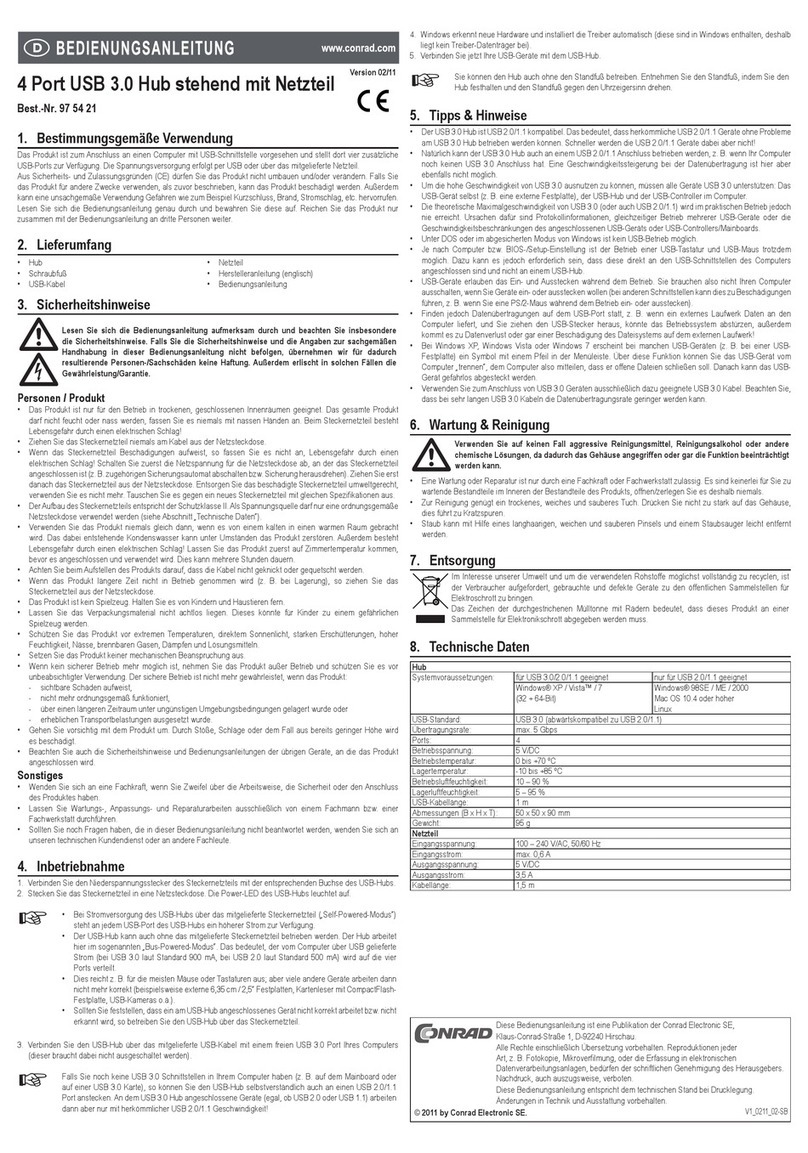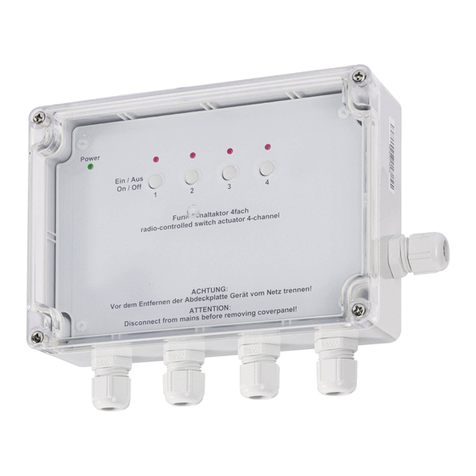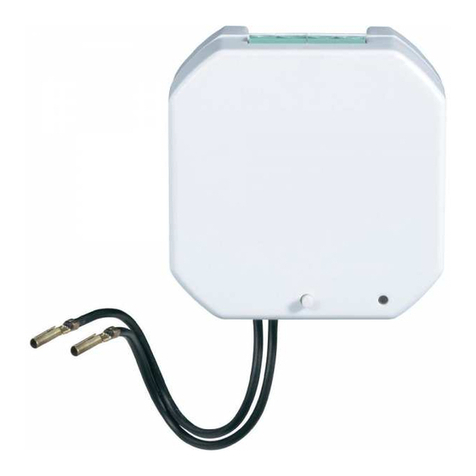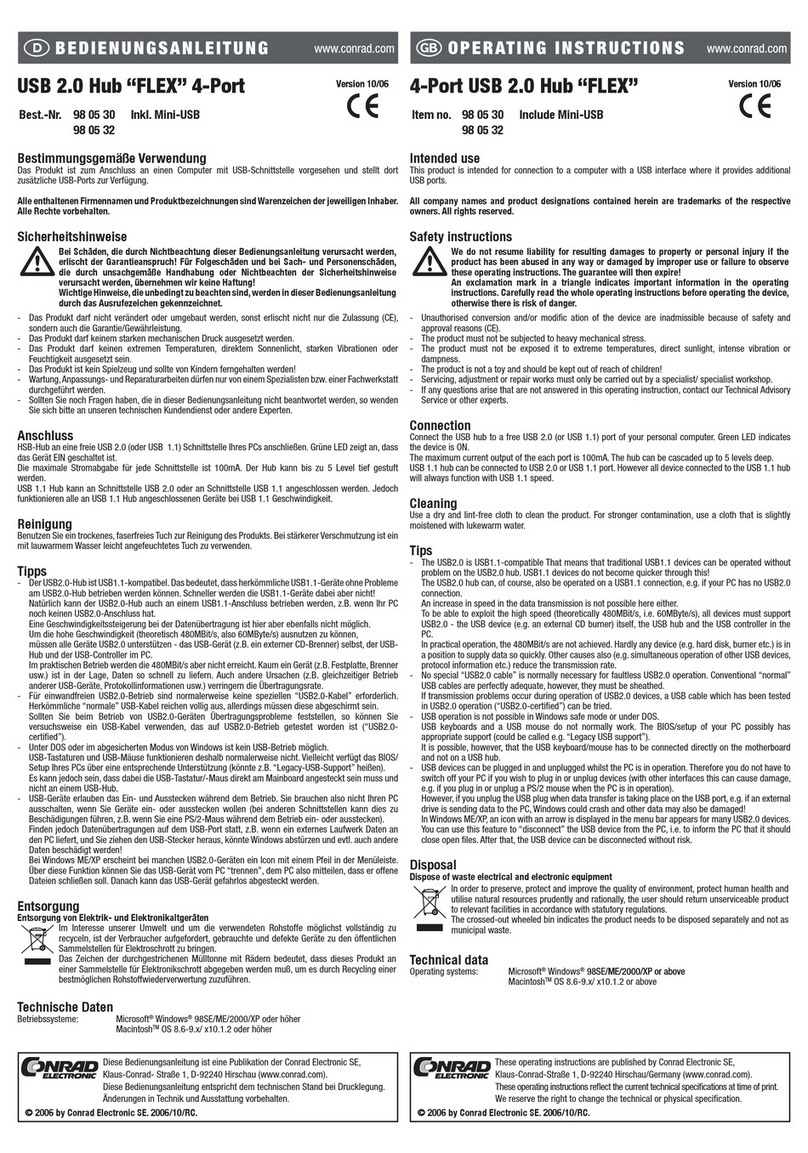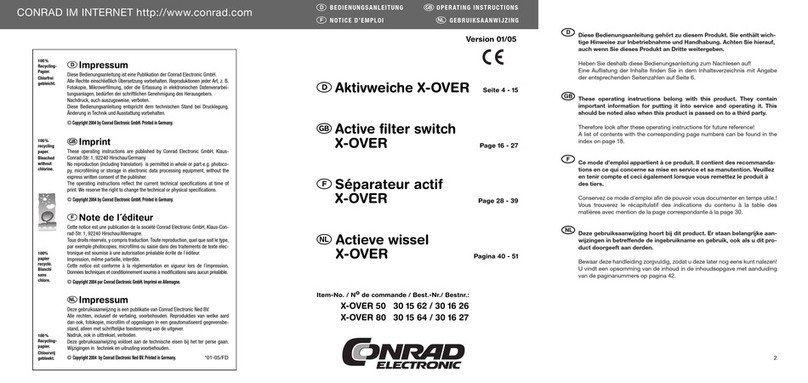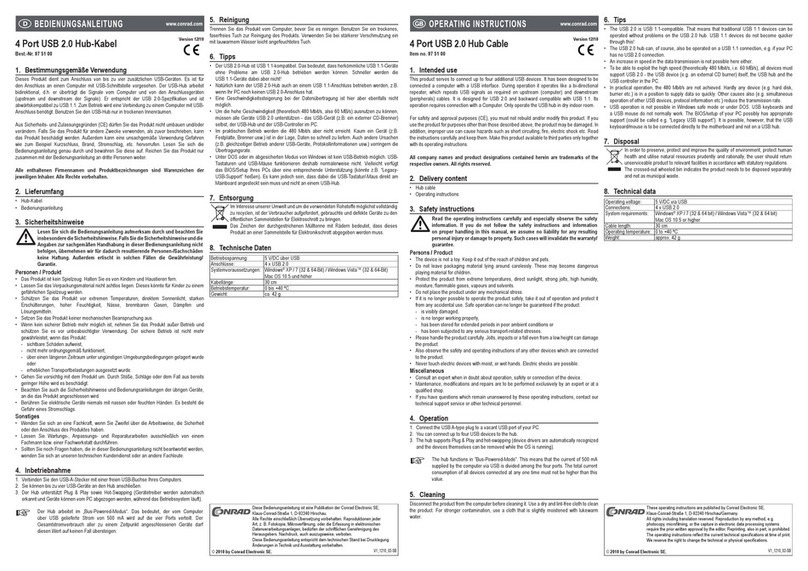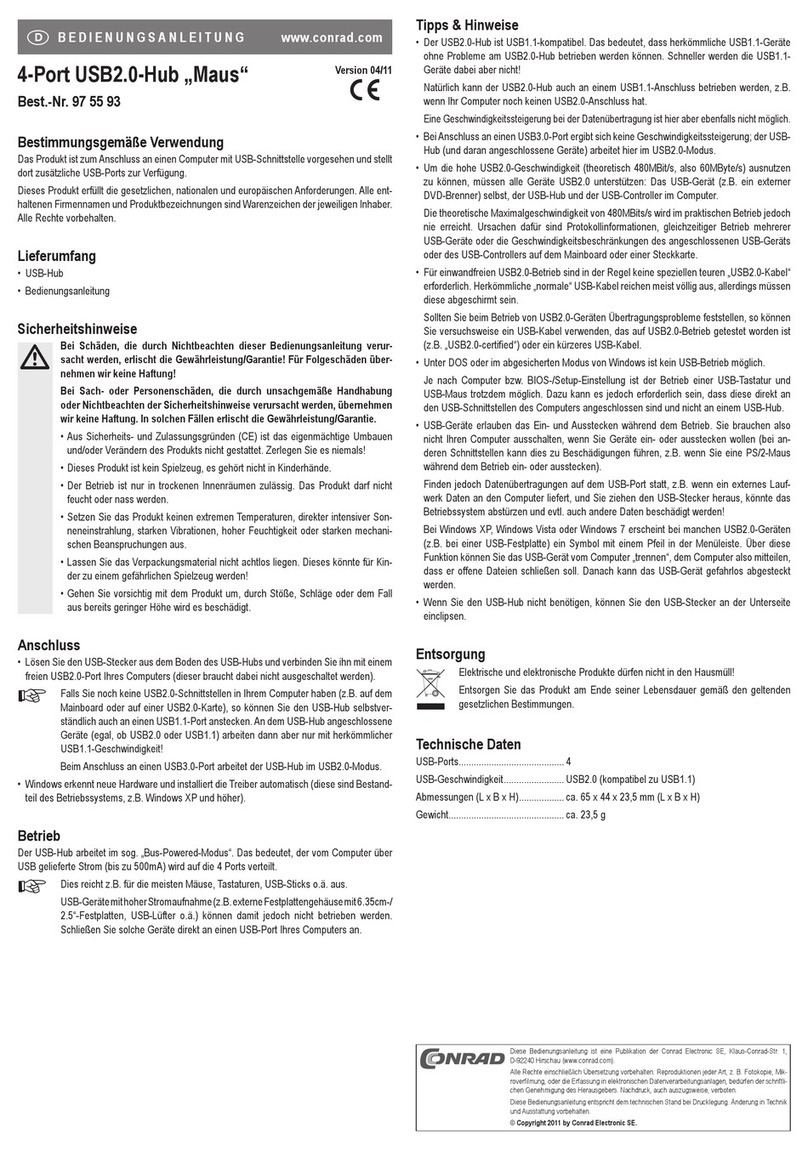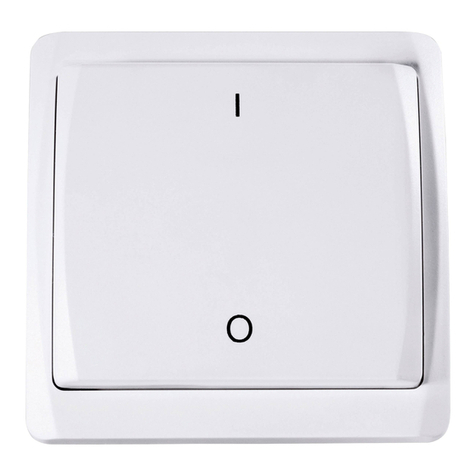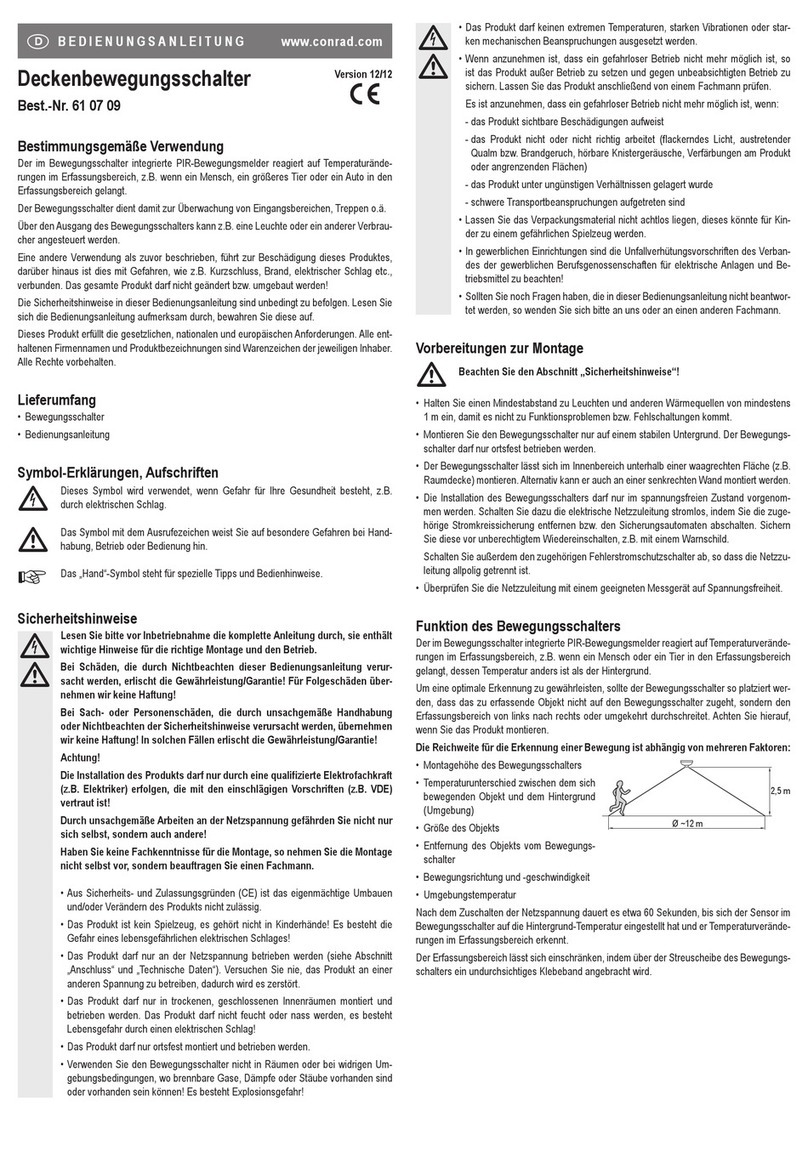Intended Use
By using the radio controlled switch socket with the suitable hand-held transmitter, a consumer
load connected to the radio controlled switch socket can be turned on or off.
The radio controlled switch socket is only intended for use in dry indoor locations.
All the safety and operating instructions in this manual must be followed carefully. These in-
structions not only protect the device but, in particular, your health. Please read the entire
operating manual before using the product.
This product complies with the applicable National and European requirements. All names of
companies and products are the trademarks of the respective owner. All rights reserved.
Package Contents
• 1 x radio controlled socket
• Operating Instructions
Safety Instructions
The warranty will be void in the event of damage caused by failure to observe
these safety instructions. Liability for any and all consequential damage is
excluded!
We do not accept liability for damage to property or personal injury caused by
improper handling or non-compliance with the safety instructions. The war-
ranty will be void in such cases.
• The unauthorized opening, conversion and/or modication of this product is not
permitted because of safety and approval reasons (CE).
• Do not use this product in hospitals or medical institutions. Although the product
emits only relatively weak radio signals, these may lead to the malfunction of life-
support systems. The same may be the case in other areas.
• The product is designed in accordance with protection class I. Only a standard
switch socket (with protective earth) connected to the public supply grid may be
used as the power source for the radio controlled switch socket.
• The product is not a toy and must be kept out of the reach of children. Therefore,
be especially careful when children are around. Children might try to push objects
through the socket openings, for example. There is a risk of a lethal electric shock!
• Never touch the product, or the switch plug, with wet or damp hands when trying
to the radio controlled switch socket. There is a risk of a lethal electric shock!
• Never remove a switch plug from the radio controlled socket by pulling on the
power cable. Always pull the plug from the radio controlled socket by gripping the
area provided for this purpose on its sides.
• Do not put more than one adaptor onto the unit!
• The unit is only without current, when the main plug is disconnected from the
outlet.
• Do not overload the radio controlled switch socket (take note of the input power in
the technical data at the end of the operating manual!).
• Do not leave packing materials unattended. They may become dangerous
playthings for children.
• Handle the product with care, it can be damaged by impacts, blows, or accidental
drops, even from a low height.
• If the product casing is damaged, do not use the product any more! When it is
connected to the switch, do not touch the radio controlled switch socket or the con-
nected device! First, switch off at the switch socket to which the radio controlled
socket is connected (i.e. switch off at the circuit breaker and the earth leakage
circuit breaker). You can then remove the radio controlled socket from the switch
socket. Take it to a specialized workshop or dispose of it in an environmentally
friendly way.
Controls
A) Control-LED (ashes when the switch socket on the front is activated)
B) Front socket for connecting of a consumer load, with child-proof lock
C) Coding switch I, II, III, IV for one of the four address codes
D) Coding switch for switch channel selection 1, 2, 3, 4
E) Safety plug for connection to the switch socket
Setting the Address Codes
One of the four address codes (I, II, III, IV) can be set on both the hand-held transmitter and
the radio controlled socket. Thus, several radio controlled switches can be operated in parallel,
without interfering with one another.
Select one of the address codes (I, II, III, IV) on the hand-held transmitter. Set exactly the same
address code on the associated radio controlled socket(s); use a at screwdriver to turn the
coding switch (C).
☞ If there are different codes set on the hand-held transmitter and the radio con-
trolled switch socket, the switch socket will not react to the switching signals
from the hand-held transmitter!
Setting the Switching Channel of the Radio Controlled Socket
On the back of the radio controlled switch socket there is another coding switch (D) that is
marked with the numbers „1“, „2“, „3“ and „4“. It is used to select one of the four switching
channels (the hand-held transmitter is also labelled with the numbers „1“, „2“, „3“ and „4“), if it
is for operating more than one radio controlled switch socket.
☞ It is of course possible to set the same switching channel for two or more
radio controlled switch sockets. In this way, the two radio controlled sockets
are activated or deactivated by one keystroke.
Start-up, Function Test
Plug the radio controlled socket (without the consumer load connected!) into the designated
earthed switch socket.
You can now test the function of the radio controlled switch socket, by briey pressing the res-
pective „ON“ button for the corresponding switching channel (1, 2, 3 or 4). The red control-LED
(A) on the radio controlled socket lights up. The socket (B) on the front is now activated; the
switch voltage is available and a connected consumer load is turned on.
Briey press the button „OFF“, for the switching channel, and the control-LED (A) is turned off
again; the switch voltage at the „front switch socket“ (B) and thus, the connected consumer
load, is turned off.
Operation
Connect a consumer load to the „front socket“ (B).
Please consult the section „Technical Data“ for the consumer load’s permissi-
ble maximum power.
By using the „ON“ or „OFF“ button for the switching channel, on the hand-held transmitter, the
radio controlled socket is turned on/off again, using the same set switching channel (control-
LED (A) lights up or turns off).
G OPERATING INSTRUCTIONS www.conrad.com
Radio Controlled Switch Socket
433 MHz
Item no. 1007639
Version 01/14


